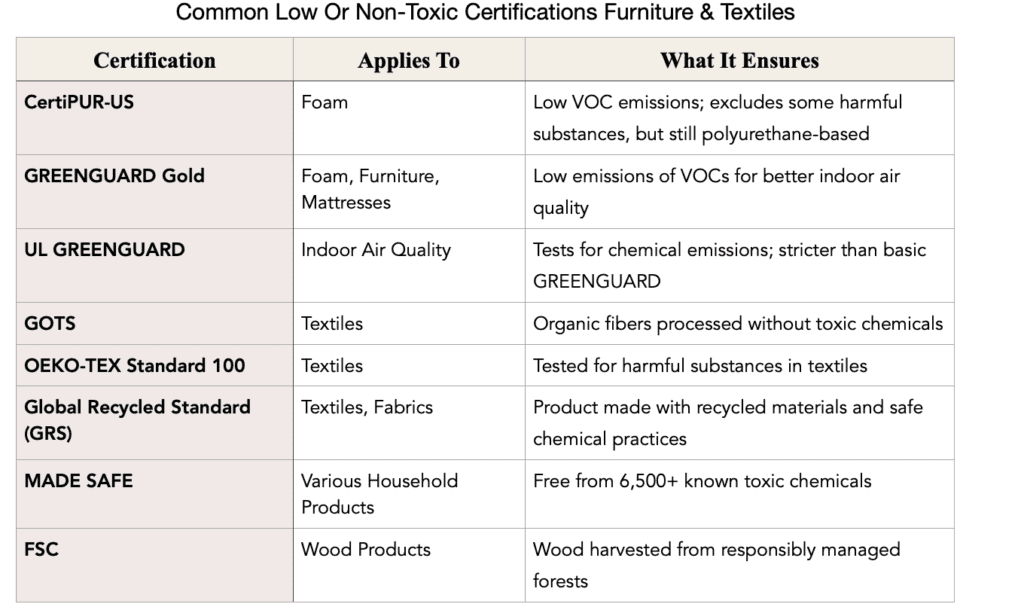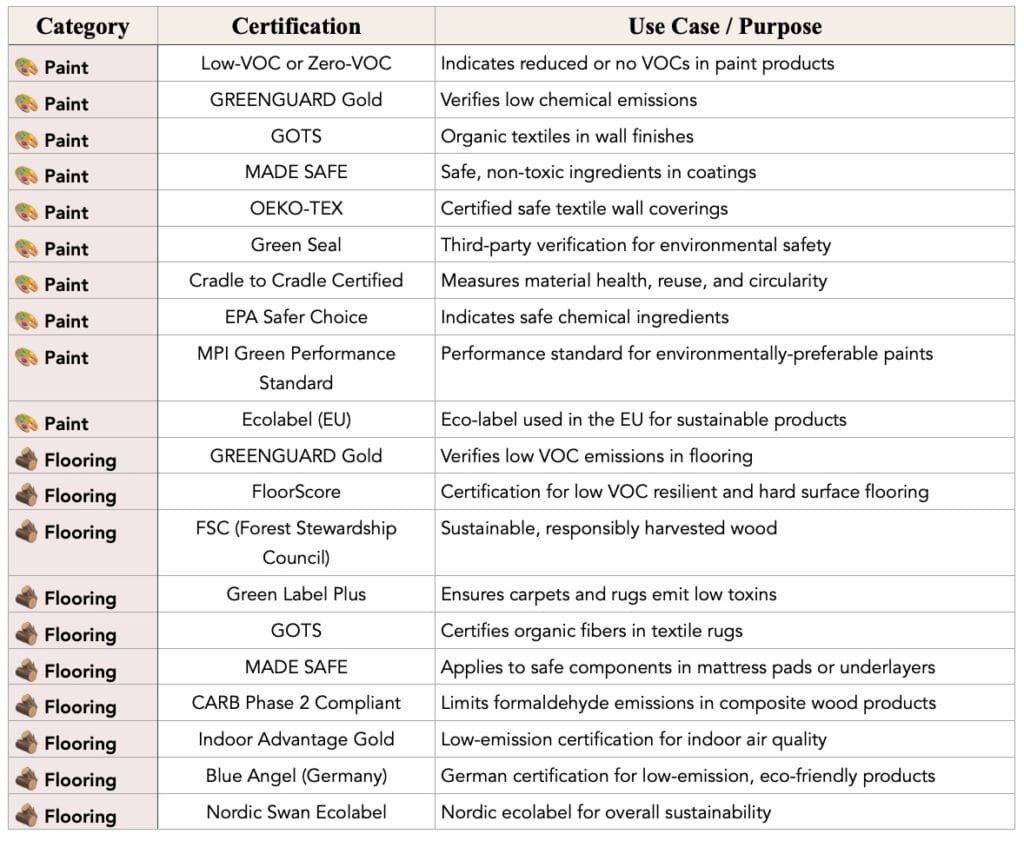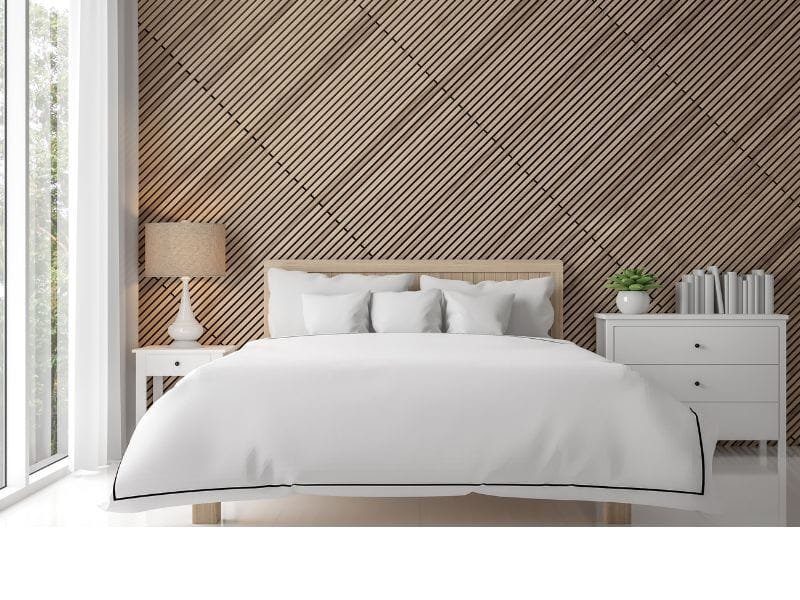Creating a Safer, Low- or Non-Toxin Spaces for Individuals on the Autism Spectrum
A home should be a safe and supportive environment, but many everyday household items contain hidden toxins that may impact neurological health, behavior, and overall well-being—especially for those on the autism spectrum. While sensory-friendly design is often a major focus in autism-supportive spaces, minimizing toxic exposure is just as important.
By learning which chemicals to avoid and making more informed choices about furniture, fabrics, air quality, and cleaning products, we can significantly reduce harmful exposures and create a healthier living space.
Why Reducing Toxins Matters in Autism-Friendly Spaces
People with autism often experience heightened sensitivities to their environment. Long-term health concerns can be triggered by harsh chemicals, synthetic scents, and off-gassing from furniture and fabrics.
Especially children are at risk because their immune and nervous systems are developing. During sleep, babies and toddlers breathe in toxins released from mattresses, carpets, and furniture. Furthermore, they breathe more rapidly, making them more susceptible to airborne pollutants.
Common household toxins have been linked to the following health issues:
- Neurodevelopmental conditions: Although a direct causal link has not been confirmed, research suggests that environmental toxins do play a role in autism, ADHD, and learning disabilities.
- Respiratory problems: Asthma, allergies, and chronic congestion can be exacerbated by exposure to irritants and toxins.
- Endocrine disruption: Certain chemicals can interfere with hormonal balance, potentially leading to fertility issues and other health problems.
- Cognitive decline: Some studies suggest a connection between specific chemicals and neurological disorders like Alzheimer’s disease.
- Gastrointestinal issues: Many individuals with autism experience digestive problems, which can be worsened by environmental toxins.
- Sleep disorders: Exposure to certain chemicals and electromagnetic fields may contribute to sleep disturbances, which are common in autism.
- Autoimmune disorders: Some research suggests a potential link between environmental toxins and autoimmune conditions, which may be more prevalent in individuals with autism.
- Oxidative stress: Exposure to toxins can increase oxidative stress in the body, which is associated with autism and other neurodevelopmental conditions.
- Mitochondrial dysfunction: Some environmental toxins may impact mitochondrial function, which is implicated in autism.
Reducing toxins in the home isn’t just beneficial for autistic individuals—it’s an essential step toward better health for everyone.
Hidden Toxins in Everyday Home Products

Here are some of the most common harmful chemicals lurking in household items:
🛋️ In Furniture & Fabrics:
1. PBDE Flame Retardants:
- Found in: Upholstered furniture, mattresses, and fabrics.
- Health Concerns: Linked to intellectual disabilities, developmental delays, hormone disruption, and thyroid problems.
- Note: While some PBDEs have been phased out, older furniture may still contain them, and replacements may have similar toxicity.
2. PFAS (“Forever Chemicals”):
- Found in: Stain-resistant upholstery, carpets, rugs, nonstick cookware, water-resistant clothing, and food packaging.
- Health Concerns: Known as “forever chemicals” because they persist in the environment and human body. Linked to immune system suppression, thyroid disruption, liver damage, kidney cancer, and developmental effects.
- Note: PFAS can migrate from products into the air and dust, leading to inhalation and ingestion.
3. Formaldehyde:
- Found in: Pressed wood products (plywood, particleboard, MDF), furniture adhesives, laminate flooring, wrinkle-free fabrics, and some foam insulation.
- Health Concerns: Known irritant to the respiratory system (eyes, nose, throat). Classified as a known human carcinogen, linked to nasal and lung cancer. Can trigger asthma and allergies.
- Note: Off-gassing of formaldehyde can occur for years, especially in new furniture. Look for products labeled “low-VOC” or “no added formaldehyde.”
4. Azo Dyes:
- Found in: Textiles, leather products, and some brightly colored fabrics.
- Health Concerns: Some Azo dyes can break down and release carcinogenic aromatic amines. Banned in Europe due to potential cancer and allergy risks, but still legal in the U.S.
- Note: Dark or vibrant colors, especially in imported textiles, may be more likely to contain Azo dyes.
5. Pesticides in Animal-Based Materials:
- Found in: Wool, leather, silk, and fur products.
- Health Concerns: Animals may be exposed to pesticides during their lives, and residues can remain in their products. These residues can trigger allergic reactions and pose other health risks.
- Note: Look for organic or sustainably sourced animal products to minimize pesticide exposure.
6. Volatile Organic Compounds (VOCs):
- Found in: Adhesives, paints, finishes, and some synthetic fabrics.
- Health Concerns: VOCs can off-gas from furniture and materials, causing respiratory irritation, headaches, dizziness, and nausea. Some VOCs are known carcinogens.
- Note: Choose low-VOC or VOC-free products whenever possible. Ensure proper ventilation, especially when new furniture is introduced.
7. Phthalates:
- Found in: Vinyl flooring, some synthetic leather, and certain plastics used in furniture components.
- Health Concerns: Linked to hormone disruption, developmental and reproductive toxicity, and asthma.
8. Heavy Metals:
- Found in: Some paints, dyes, and finishes.
- Health Concerns: Lead, mercury, and cadmium can be toxic, especially to children. Lead can cause neurological damage, developmental delays, and learning disabilities.
- Note: Ensure that paints and finishes comply with safety standards and do not contain heavy metals.
🏠 In Paint, Flooring & Household Products:
1. Volatile Organic Compounds (VOCs):
- Found in: Wall paint, floor finishes, adhesives, sealants, cleaning products, and air fresheners.
- Health Concerns: VOCs off-gas into indoor air and contribute to headaches, nausea, dizziness, respiratory irritation, and long-term exposure has been linked to liver, kidney, and central nervous system damage. Some VOCs are also classified as carcinogens.
- Note: VOCs are most concentrated during and shortly after renovation or installation. Choose low-VOC or zero-VOC paints, adhesives, and finishes, and ensure proper ventilation during and after use.
2. Phthalates & Parabens:
Found in: Vinyl flooring, plastic household items, cleaning products, synthetic fragrances, and personal care items.
Health Concerns: Known endocrine disruptors linked to hormonal imbalances, reproductive issues, asthma, and developmental delays in children.
Note: Look for “phthalate-free” and “fragrance-free” labels. Many products list “fragrance” as an ingredient, which can contain hidden phthalates.
3. Formaldehyde:
Found in: Pressed wood products (MDF, particleboard), laminate flooring, cabinetry, insulation, and paints.
Health Concerns: Triggers eye, nose, and throat irritation; linked to asthma and allergies. Classified as a known human carcinogen associated with nasal and lung cancers.
Note: Off-gassing can continue for years after installation. Look for products labeled “no added formaldehyde” or CARB Phase 2 compliant.
4. PFAS (“Forever Chemicals”):
Found in: Stain-resistant carpeting, vinyl and laminate flooring, nonstick cookware, waterproof sprays, and some cleaning products.
Health Concerns: PFAS accumulate in the body and are linked to thyroid disease, hormonal disruption, immune system suppression, kidney and liver damage, and cancer.
Note: These chemicals can enter indoor dust and air, contributing to long-term exposure. Avoid products labeled “stain-resistant” or “waterproof” unless specifically PFAS-free.
5. Flame Retardants (PBDEs and others):
Found in: Carpet padding, electronics, insulation, and older upholstered furniture.
Health Concerns: Linked to neurodevelopmental delays, hormone disruption, thyroid dysfunction, and lower IQ in children.
Note: While PBDEs are being phased out, replacements may carry similar risks. Consider natural materials and GOTS or GREENGUARD-certified products.
6. Heavy Metals (Lead, Mercury, Arsenic, Cadmium):
Found in: Older paints (pre-1978), contaminated tap water, ceramics, imported goods, and household dust.
Health Concerns: Especially dangerous for children—linked to cognitive and behavioral issues, developmental delays, and organ damage.
Note: If your home was built before 1978, have it tested for lead. Use water filters certified to remove heavy metals, and opt for non-toxic finishes and paints.
7. Benzene & Toluene:
Found in: Paint thinners, glues, adhesives, sealants, and gasoline fumes stored in garages.
Health Concerns: Affect the nervous system and are classified as carcinogenic. Can cause headaches, drowsiness, and long-term organ damage.
Note: Choose water-based adhesives and avoid storing harsh solvents inside the home.
8. Mold & Mycotoxins:
Found in: Damp basements, leaky roofs, poorly ventilated bathrooms, and under flooring.
Health Concerns: Mold spores can cause respiratory irritation, fatigue, brain fog, and chronic inflammation, especially in sensitive individuals.
Note: Use dehumidifiers, fix leaks promptly, and ensure adequate airflow to prevent mold buildup.
🧼 Found in Cleaning & Personal Care Products:
1. Artificial Fragrances:
Found in: Air fresheners, candles, detergents, dryer sheets, cleaning sprays, shampoos, lotions, and perfumes.
Health Concerns: Often contain undisclosed chemicals like phthalates, which are endocrine disruptors that interfere with hormone regulation. They can trigger headaches, allergies, asthma, and sensory sensitivities—particularly in children and individuals with autism.
Note: The term “fragrance” or “parfum” on labels can hide dozens of chemical ingredients. Choose products labeled fragrance-free or those that use transparent essential oil blends.
2. Triclosan & Antibacterial Agents:
Found in: Antibacterial soaps, toothpaste, deodorants, hand sanitizers, and disinfecting cleaners.
Health Concerns: Linked to hormone disruption, thyroid imbalance, and the development of antibiotic-resistant bacteria. Banned in some countries but still found in many U.S. products.
Note: Avoid “antibacterial” claims unless necessary. Regular soap and water are often just as effective.
3. Bleach (Sodium Hypochlorite):
Found in: Disinfectants, toilet bowl cleaners, laundry whiteners, and mold removers.
Health Concerns: Can cause skin burns, respiratory irritation, and worsen asthma. Reacts with other chemicals (like ammonia or acids) to release toxic gases.
Note: Use with proper ventilation and never mix with other cleaners. Consider safer alternatives like hydrogen peroxide or vinegar (never mixed with bleach!).
4. Ammonia:
Found in: Glass cleaners, multi-surface sprays, and bathroom products.
Health Concerns: Strong irritant to the skin, eyes, and respiratory system. Dangerous when mixed with bleach, creating toxic chloramine vapors.
Note: Opt for ammonia-free cleaners and open windows during use for airflow.
5. Parabens:
Found in: Shampoos, conditioners, body washes, lotions, makeup, and shaving products.
Health Concerns: Parabens mimic estrogen and are linked to hormone disruption, reproductive toxicity, and increased breast cancer risk.
Note: Look for “paraben-free” on labels, and opt for certified organic personal care products when possible.
6. Sodium Lauryl Sulfate (SLS) / Sodium Laureth Sulfate (SLES):
Found in: Soaps, shampoos, body wash, toothpaste, and facial cleansers.
Health Concerns: Known skin irritant that can strip natural oils, causing dryness and inflammation. May be contaminated with 1,4-dioxane, a probable human carcinogen.
Note: Choose sulfate-free formulas, especially for sensitive skin.
7. Formaldehyde-Releasing Preservatives:
Found in: Nail polish, hair straightening treatments, liquid soaps, and baby wipes.
Health Concerns: Slow release of formaldehyde into the air or onto skin, contributing to respiratory irritation and long-term cancer risk.
Note: Look for ingredients like DMDM Hydantoin, Quaternium-15, or Imidazolidinyl urea—all of which release formaldehyde.
8. PEGs & Ethoxylated Ingredients:
Found in: Creams, lotions, cleansers, and hair products.
Health Concerns: Often contaminated with 1,4-dioxane and ethylene oxide, which are linked to cancer and organ toxicity.
Note: Avoid ingredients with “PEG,” “-eth,” or “oxynol” in the name, unless certified to be contaminant-free.
4 Ways to Detox Your Home & Make It Safer

It doesn’t have to be overwhelming to move from a toxic environment to one that is free from toxins. The most important areas should be prioritized first!
1️⃣ Improve Indoor Air Quality 🌿
It doesn’t have to be overwhelming to move from a toxic environment to one that is free from toxins. The most important areas should be prioritized first and small changes should be made.
- Increase ventilation – Open windows often to let in fresh air and reduce chemical buildup.
- Use an air purifier – Choose one with HEPA and activated carbon filters to trap dust, allergens, and VOCs.
- Add air-purifying plants – Snake plants, peace lilies, and bamboo palms naturally absorb pollutants.
2️⃣ Switch to Safer Cleaning & Personal Care Products 🧴
- Ditch artificial fragrances – Opt for unscented or naturally scented products to avoid endocrine disruptors.
- Use natural cleaning alternatives – White vinegar, baking soda, and castile soap are safer substitutes for conventional cleaners.
- Simple DIY Options – For cleaning: vinegar + baking soda, lemon, and essential oils. For personal care: organic oils like coconut, jojoba, or shea butter.
- Packaging Matters – Choose non-aerosol sprays and BPA-free or glass containers when possible to reduce exposure to plasticizers.
- Choose organic personal care products – Look for hypoallergenic options free of sulfates, parabens, and phthalates.
- Look for Alternatives & What to Look For:
- Fragrance-Free or Essential Oil-Based Scents – Choose products labeled “fragrance-free” or those that use clearly listed essential oils instead of artificial fragrances.
- Paraben-Free, Phthalate-Free, Sulfate-Free – These labels help avoid some of the most common endocrine-disrupting and irritating ingredients.
- Non-Toxic Cleaning Brands – Look for companies that fully disclose ingredients and avoid harsh disinfectants.
3️⃣ Choose Safer Furniture & Fabrics 🛋️
Many everyday fabrics and furniture emit harmful chemicals into the air, which is especially concerning for people with sensory or chemical sensitivity. By making some thoughtful swaps, you can reduce these risks.
- Choose for Solid Wood: Instead of particle board, MDF, or plywood—which often contain formaldehyde-based glues that off-gas for years—choose solid wood furniture. Look for pieces finished with natural oils or water-based sealers, and if you’re eco-conscious, reclaimed wood is an excellent option too.
- Choose Natural, Certified Fabrics: For bedding, curtains, or upholstery, select GOTS-certified organic cotton, hemp, or linen. These are grown without harmful pesticides and processed without toxic dyes or flame retardants. You can also look for OEKO-TEX Standard 100, which certifies that the fabric has been tested for harmful substances.
- Skip Foam-Based Mattresses & Cushions: Most conventional sofas, chairs, and especially crib mattresses use polyurethane foam, which releases VOCs (volatile organic compounds) and flame retardants over time. Instead, choose options made with organic latex, wool, or cotton, and check for labels like: GREENGUARD Gold (low chemical emissions).MADE SAFE (tested for 6,500+ harmful substances)
- For pillows and cushions, consider natural latex or kapok fiber—a plant-based alternative that’s soft and breathable.
- Watch Out for Greenwashing: Words like “natural” and “organic” don’t always mean safe. Many brands use these terms loosely. Always look for third-party certifications (listed below).
- Secondhand Furniture is a Good Option: Older solid wood pieces are often safer than new, mass-produced items. Just avoid anything painted before 1978 (possible lead paint), and if you refinish, use non-toxic stains or sealers.
How Do You Know Tell If Furniture Has Toxic Chemicals?
Here’s what to look for when shopping (or evaluating what you already own):
- Read the Label or Product Details
If the label says polyurethane foam, memory foam, or even CertiPUR-US certified foam, it can off-gas VOCs — although at reduced levels. CertiPUR-US certification ensures the foam emits low levels of VOCs (less than 0.5 parts per million) and is made without certain toxic chemicals, but it does not eliminate VOCs entirely. By its nature, polyurethane foam is a petroleum-based product and will off-gas to some extent, especially when new.
If it says “complies with TB 117-2013”, it may contain flame retardants—older versions of this standard required them.
2. Smell Test: A strong chemical smell when unboxing indicates VOCs.. But remember, lack of odor doesn’tmean toxin-free.
3. Look for Third Party Certifications (chart)

How Long Do These Chemicals Off-Gas?
Most furniture off-gasses the most in the first 6 months
Polyurethane foam releases VOCs for 5–10 years, especially in unventilated spaces
Flame retardants are even more persistent and accumulate in household dust
What You Can Do to Reduce Exposure:
Air out newly purchased furniture outside or in a ventilated area for a few weeks
Use an air purifier with activated carbon to filter VOCs
Vacuum regularly with a HEPA filter to remove flame retardant dust
When replacing furniture, choose organic latex, wool, or certified natural fibers
4️⃣ Use Non-Toxic Paint & Flooring 🎨
Paint and flooring are two of the biggest contributors to indoor air pollution—especially after renovations. They can release VOCs (volatile organic compounds) and other harmful chemicals into your home for years. But with a few mindful swaps, you can make your space noticeably healthier.
- Safer Paint Options
Most conventional paints contain VOCs, which slowly off-gas into the air and can cause headaches, nausea, dizziness, or trigger respiratory issues—especially for children or anyone with chemical sensitivities.
What to look for:
- Low-VOC or Zero-VOC paint
- Water-based formulas (avoid oil-based)
- VOC-free tints (often overlooked when coloring)
Tip: Even if your base paint is VOC-free, traditional color tints can add toxins back in—double-check that your tint is also labeled VOC-free.
Trusted brands include:
- Farrow & Ball
- ECOS Paints
- AFM Safecoat
- Benjamin Moore Natura
(See the chart for more third-party certifications to look for.)
2. Safer Flooring Options
Flooring can be a hidden source of off-gassing—especially synthetic or adhesive-heavy types like vinyl or laminate. These can release VOCs, formaldehyde, and even phthalates, which have been linked to hormone disruption and respiratory issues.
Avoid:
- Vinyl and luxury vinyl planks (LVP)
- Synthetic carpets with chemical backings or flame retardants
- Engineered wood or laminate without proper certifications
Better choices:
- Solid hardwood sealed with water-based, non-toxic finishes
- Natural bamboo (check for formaldehyde-free)
- Cork or true linoleum – both are breathable and low-emitting
- Certified low-toxin carpets or natural fiber rugs
(See the flooring section in the chart for certifications to verify safety.)
How to Tell If Your Paint or Flooring Is Toxic?
Paint:
- Labels that don’t say “Low-VOC” or “Zero-VOC” likely contain VOCs
- A strong chemical odor after painting is a red flag
Flooring:
- Vinyl and laminate often use formaldehyde-based adhesives
- “CARB Phase 2 compliant” means it meets basic standards but isn’t necessarily low-emission
- Look for certifications like GREENGUARD Gold or FloorScore for safer options
How Long Do These Materials Off-Gas?
Paint:
- Most off-gassing occurs in the first 3–5 days
- High-VOC or oil-based paints can off-gas for weeks or even months
Flooring:
- Vinyl and laminate can release toxins for 3–10 years
- Flame retardants and adhesives can linger for even longer, especially in warm, unventilated areas
What You Can Do to Reduce Exposure?
- Ventilate well – open windows and run fans after painting or installing new flooring
- Air out materials – let rugs or flooring air out in a garage or outside before bringing them in
- Use an air purifier with activated carbon – helps absorb lingering VOCs
- Start with bedrooms – prioritize spaces where your family spends the most time
- Check For the following certifications – don’t rely on vague “eco” labels

Where to Begin if You Feel Overwhelmed
If making all these changes at once feels like too much, focus on the biggest impact areas first:
- Start with the Bedroom 🛏️ – Choose a non-toxic mattress, since sleep is when the body heals and detoxifies.
- Swap Out Harsh Cleaners 🧼 – Removing daily exposure to strong chemicals can make an immediate difference.
- Improve Air Quality 🌬️ – Use an air purifier and ventilate regularly.
- Be Mindful of New Purchases 🛋️ – Gradually replace furniture and décor with low-VOC, non-toxic options.
Point of Alignment: Small Steps Lead to Big Changes
Creating an autism-friendly, low-toxin space is about building awareness and making informed choices that support long-term health and well-being.
Start small, stay consistent, and focus on what works best for your family.
Ready to take the first step? Begin with our guide: How to Design Autism-Friendly Spaces: 6 Expert-Approved Methods.





